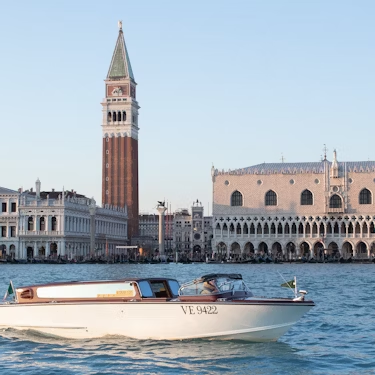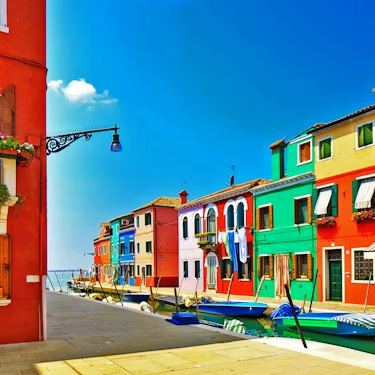More about: How to Get Around in Venice (gondola, vaporetto ferry, water taxi...)
One of the most incredible experiences in Italy is stepping out of the Santa Lucia train station and witnessing the beauty of Venice. It feels like traveling to a time before automobiles, where the only way to travel is by boat or on foot.
Of course, Venice's transportation is unique and very different from most cities; therefore, knowing the different means of transportation in this city is synonymous with getting to know Venice. In this guide I will explain all the options you have to get around this dream archipelago.
Getting around Venice on foot
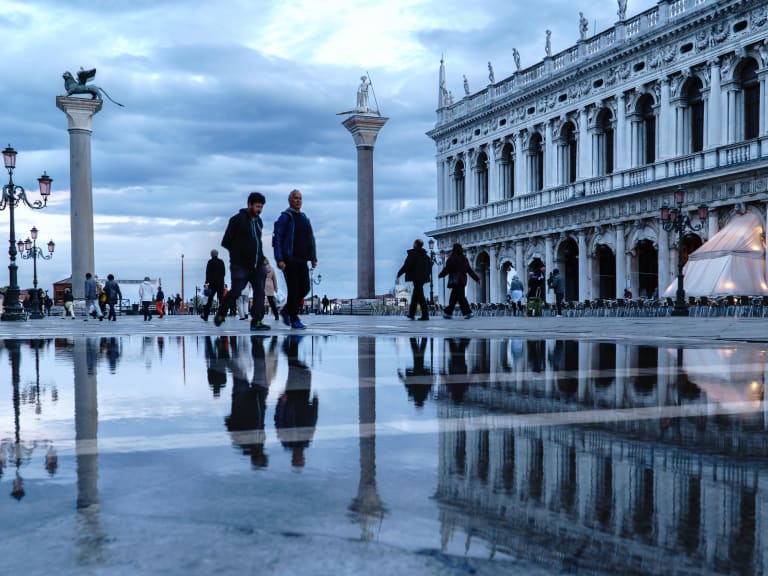
Walking is probably still the best way to get around Venice's six sestieri (districts into which the city is divided). The city of the Lagoon is relatively small (getting from Santa Lucia train station to St. Mark's Square will only take you about thirty minutes on foot, and this is one of the longest walks) and its main sights are usually well marked and easy to find.
Walking along the canals is definitely a unique experience in itself and will allow you to discover hidden corners and squares that would otherwise be impossible to reach. Following along the same lines, it also gives you the possibility to see the small bridges and canals of Venice, get to know better the atmosphere of each area, the culture of the Venetians and the habits from a closer perspective.
You don't have to worry about high water either: the city deploys walkways in case the streets get flooded, although it would be advisable to bring some rain boots ready to wear, especially if you go in autumn or winter to Venice to Venice. In any case, I leave you with this post on some tips for your trip to Venice.
Getting around Venice by vaporetto
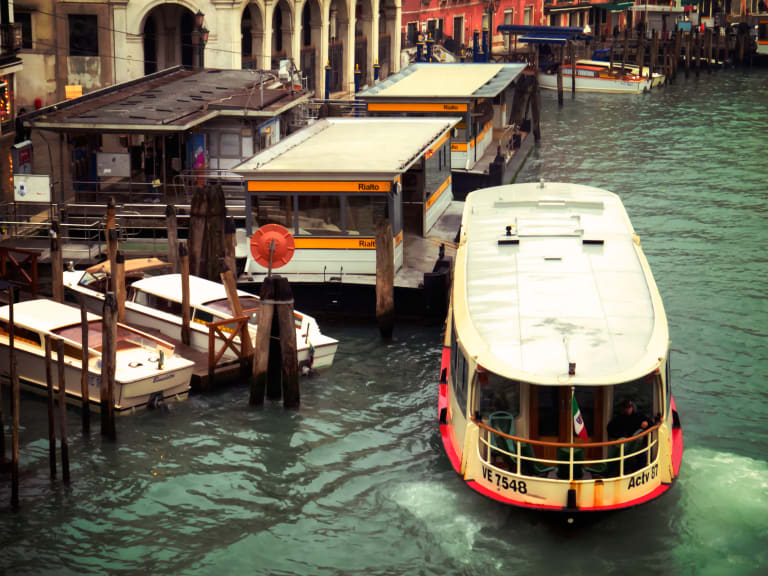
If walking is not your thing, the most recommended and cost-effective option is to get around by water bus or vaporetto. The public service runs 24 hours a day, 7 days a week, all year round. During the day, the water buses that run along the Grand Canal have a frequency of less than 10 minutes. However, to reach the islands of Murano and Burano the maximum frequency is every 20 minutes. And, during the night, the frequencies or waiting times are doubled.
You can buy water bus tickets in many places in Venice:
- At the vending machines in front of all the main stops.
- At the ticket offices outside the train station, both in Rialto and St. Mark's.
- At newsstands and tobacconists.
- On board the water bus itself, as long as you have cash.
And if you are wondering about prices:
- A single ticket costs 7,50€ and is valid for 75 minutes.
- A 1-day ticket lasts 24 hours after validation and costs 20 €.
- There are also 2-day, 3-day and 7-day tickets available.
Finally, a highly recommended option is to purchase a water transport pass that can be used on any of the three Alilaguna lines and is valid for 72 hours. The pass is activated when you use it for the first time and will allow you unlimited boarding and disembarking. All facilities!
Bus in Venice
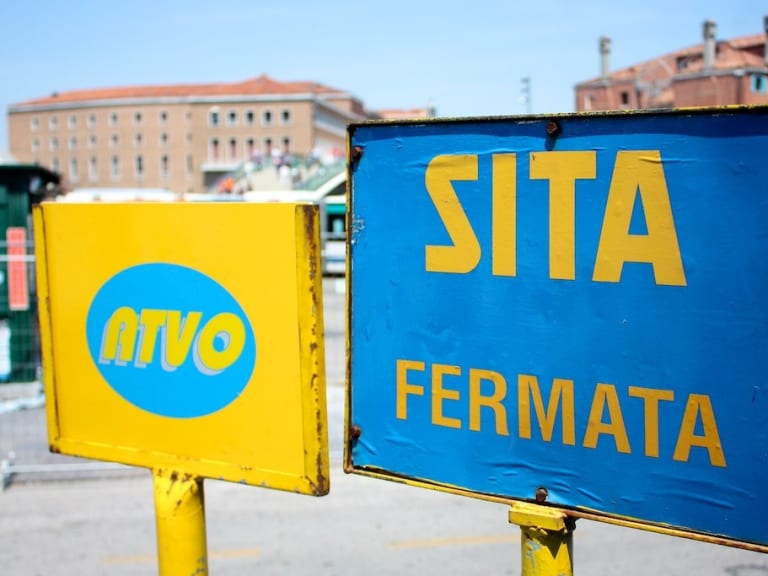
Buses do not run in the lagoon and their main function is to connect Venice with Mestre, and then also if you want to move around Mestre. Some lines, however, arrive in Venice and stop at Piazzale Roma, not far from the Santa Lucia train station. Single tickets cost 1,50 €, and you can buy a booklet of ten tickets for 14 €.
In Venice, the bus can only take you from Marco Polo airport to Piazzale Roma by taking bus 5 operated by ACTV. I have to tell you that this is the last part of Venice navigable by car; at this point, you can only get around on foot or by water.
In this regard, a great idea is to buy a transport card, which allows you to use the bus and vaporetto for 75 minutes, 24 hours, 48 hours, 72 hours or up to 7 days. You choose!
From the airport to Venice by bus
The bus takes about 25 minutes between the airport and Piazzale Roma and leaves every 15 minutes. There are luggage racks in the living area, so you will need to take your luggage on board.
You can also take the buses operated by ATVO. These leave every 30 minutes and have storage so you don't have to worry about carrying your luggage on board the bus. You can buy tickets at the airport on arrival from the ticket machines, or online if you know roughly when you will arrive.
For more information, please visit the article on airport transfers to Venice.
Getting around Venice by gondola
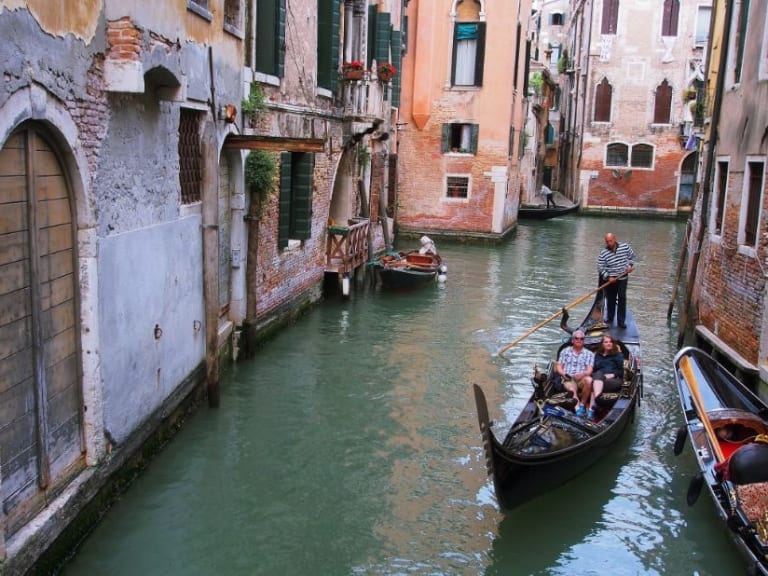
Honestly, more than a way of getting around the city, the gondola is a means of transportation, an experience and a tourist attraction. The routes and prices for gondola rides usually vary and are agreed on the spot and with each gondoliere. Not to leave you curious, you can expect to pay between €60-80 for a half-hour ride during the day and around €80-100 at night.
Sharing a gondola is always a good solution to lower prices, although you can't transport as many people as in a water cab. A gondola can carry up to 6 people, including the gondoliere.
You can find gondolas all over the city. The rides offer beautiful views of the surroundings, passing by the Grand Canal and some of Venice' s most important bridges and monuments. Undoubtedly the great advantage of the gondolas is that they give you the opportunity to explore narrow canals and beautiful areas of the city that you would not otherwise see. They may not be the best means of transportation; however, if you are looking for pleasure and sightseeing at the same time, then they are recommended.
Traghetto
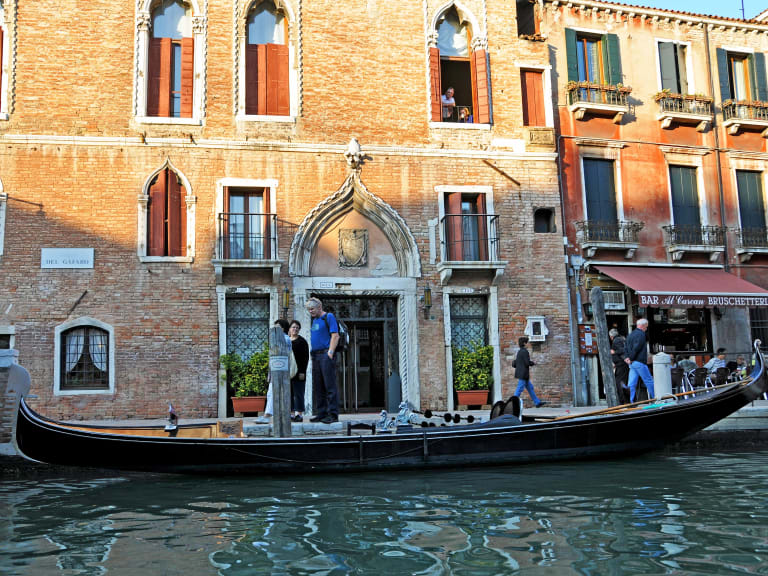
Traghetti are very similar to gondolas, but are only used to cross the Grand Canal perpendicularly at points where there is no bridge nearby. Therefore, traghetti serve more as a means of transportation than gondolas.
Remember that there are only four bridges crossing the Grand Canal; therefore, instead of traveling a long distance in search of a bridge as a lifeline and then repeating the route in reverse, I recommend you better board a traghetto as the Venetians do at one of the seven stops along the Grand Canal. The traghetti carry passengers back and forth from one bank to the other continuously and their gondola drivers do not sing or wear striped shirts, hence a way of getting around Venice that is more transport-oriented and less artistic or touristy.
You'll pay 2 euros in cash when you get on and watch as the locals stand rather than sit. So, if you are looking to take pictures, you should hurry as the ride is quite short and fast.
Getting around Venice by water cab
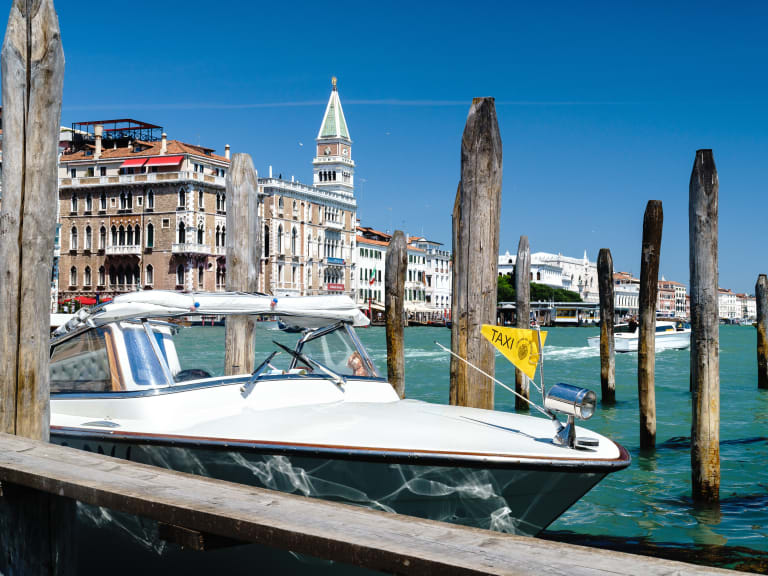
Cabs are much more expensive than public transportation, but they are also the only luxurious and private way to get around on the water. In addition, a water cab will make your trip last much less time and not precisely because of the speed, but because it goes straight to the destination.
Regarding the price, a cab ride will cost you between 100 and 130 € per way for a maximum of 4 people. Up to 10 people can fit in a cab; however, from the fifth passenger onwards an additional fee of around 15 € will be charged.
Alternatively, you can also hire a water cab to transfer you from the airport to the center of Venice or book a ride to return to Marco Polo airport when you finish your stay in Venice.
Venice Ferry
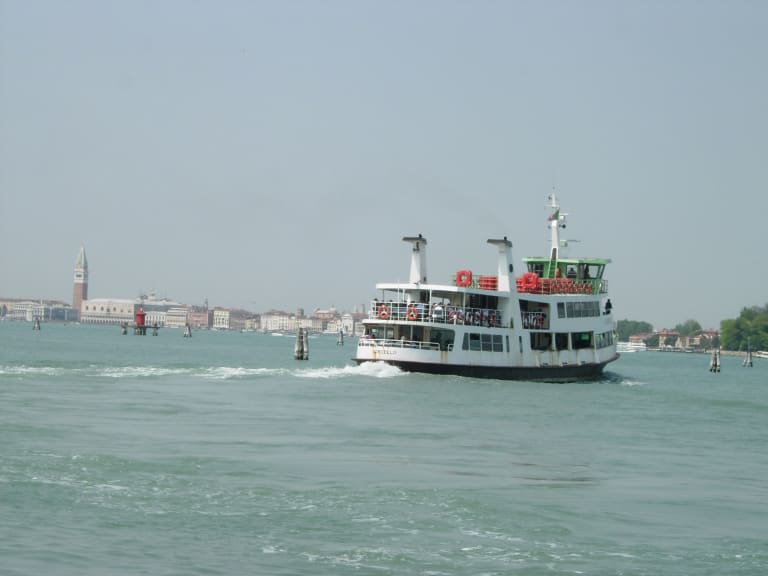
The ferryservice consistsof two main lines, 17 and 11, which connect Venice and stop in the most important areas of each district. Line 11 starts in Lido and moves south to Pellestrina, while line 17 starts from the Cavallino beach area and heads north.
The ferry is an excellent option if you want to move from end to end without stopping so much. Prices depend a bit on where you want to get to and from, although it should also be said that they are usually updated over time. However, as a reference, the minimum price to get on is 8€ per person.
Tickets for public transport in Venice
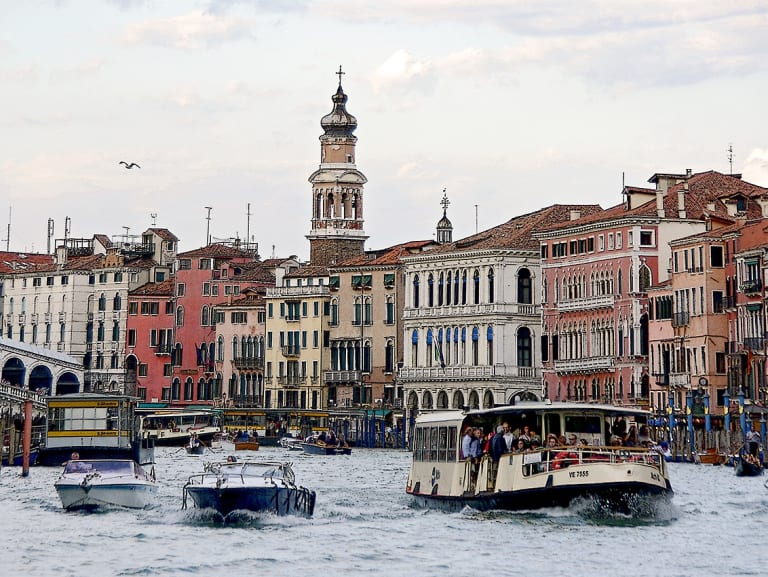
The only boats in Venice for which tickets apply are the vaporetti , as all other boats require a direct payment that varies in price depending on the duration or distance of the trip. If you are interested in vaporetti tickets you can buy different tickets depending on your stay:
- Single tickets will serve you very well in case you are going for just one day to Venice.
- If you are going to be in Venice for 3 days or more I recommend the day passes.
- In case you are going to be in Venice for more than 7 days, you might be better off with a weekly pass.
Although the best option is to buy a transport card that includes not only the vaporetto, but also the buses, so you don't have to worry about how to get around and just think about where you want to go.
After buying a ticket, you must validate it before getting on the vaporetto. The validation machines are usually located on the edge of the walkway leading to the actual vaporetto stop, and upon validation a time stamp will appear on your ticket. I recommend you not to cheat and validate when you have to regardless of whether you are asked to show your ticket, or not.
How do Venetians get around Venice?
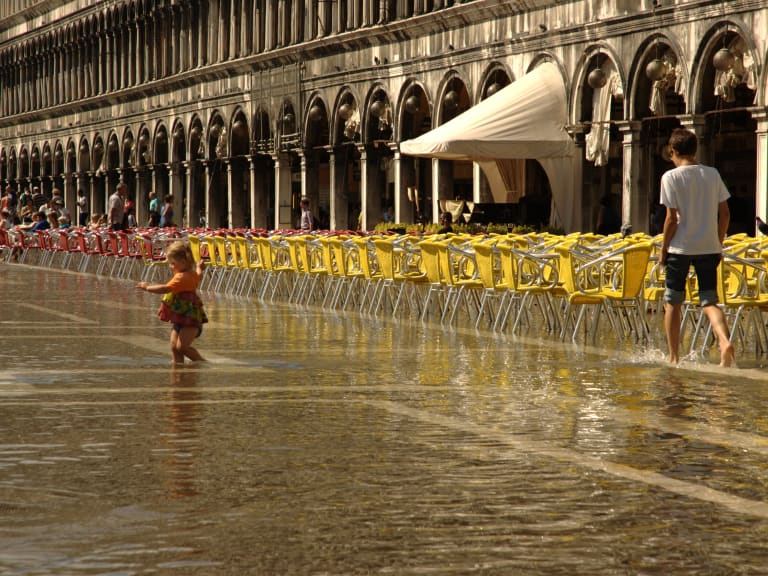
Most of the time, Venetians prefer to get around on foot and only use public transportation when necessary, for example, when they need to cross the water.
You will see how Venetians use rowing boats mainly for sport or for the simple pleasure of rowing, while motor boats are used more as a means of transportation, either to get around or to move their goods.
Getting around on foot is the fastest and most efficient means of transportation in Venice, as long as you know how to get to your destination, of course!
Recommendations for getting around Venice
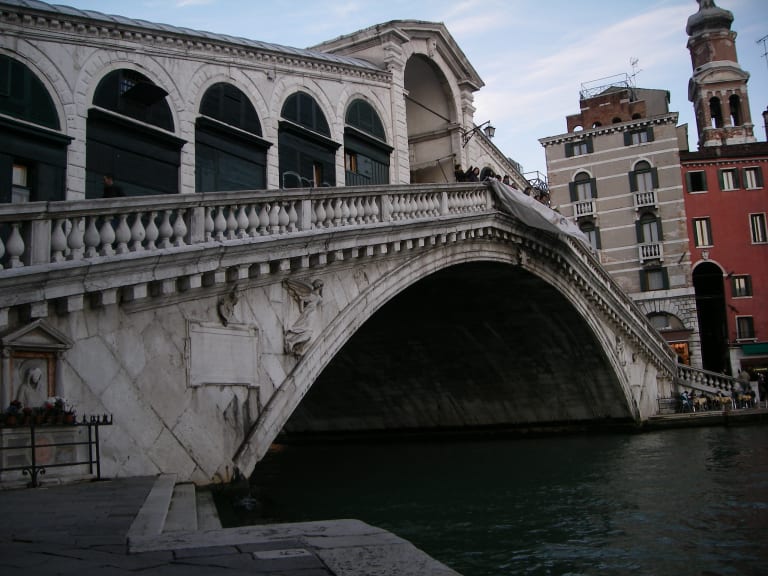
Whenever possible, I recommend getting around on foot as the real Venetians do. In addition, by doing so you will be able to enjoy the most touristic areas and monuments such as the Rialto Bridge, the Bridge of Sighs or St. Mark's Basilica itself. In addition, you avoid the queues at the machines and the crowds in general. Not to mention that the most interesting places to eat in Venice are not exactly near the vaporetti stops.
I also recommend you to enjoy Venice from the water, regardless of the means you use, logically the gondolas are the most comfortable option. Seeing Venice from the water will give you a completely different perspective of what life in the city is like!
In addition, walking and taking a tour in a rowboat are not only beautiful and fun activities, they are also ways that allow you to discover the city while helping you reduce your carbon footprint.

